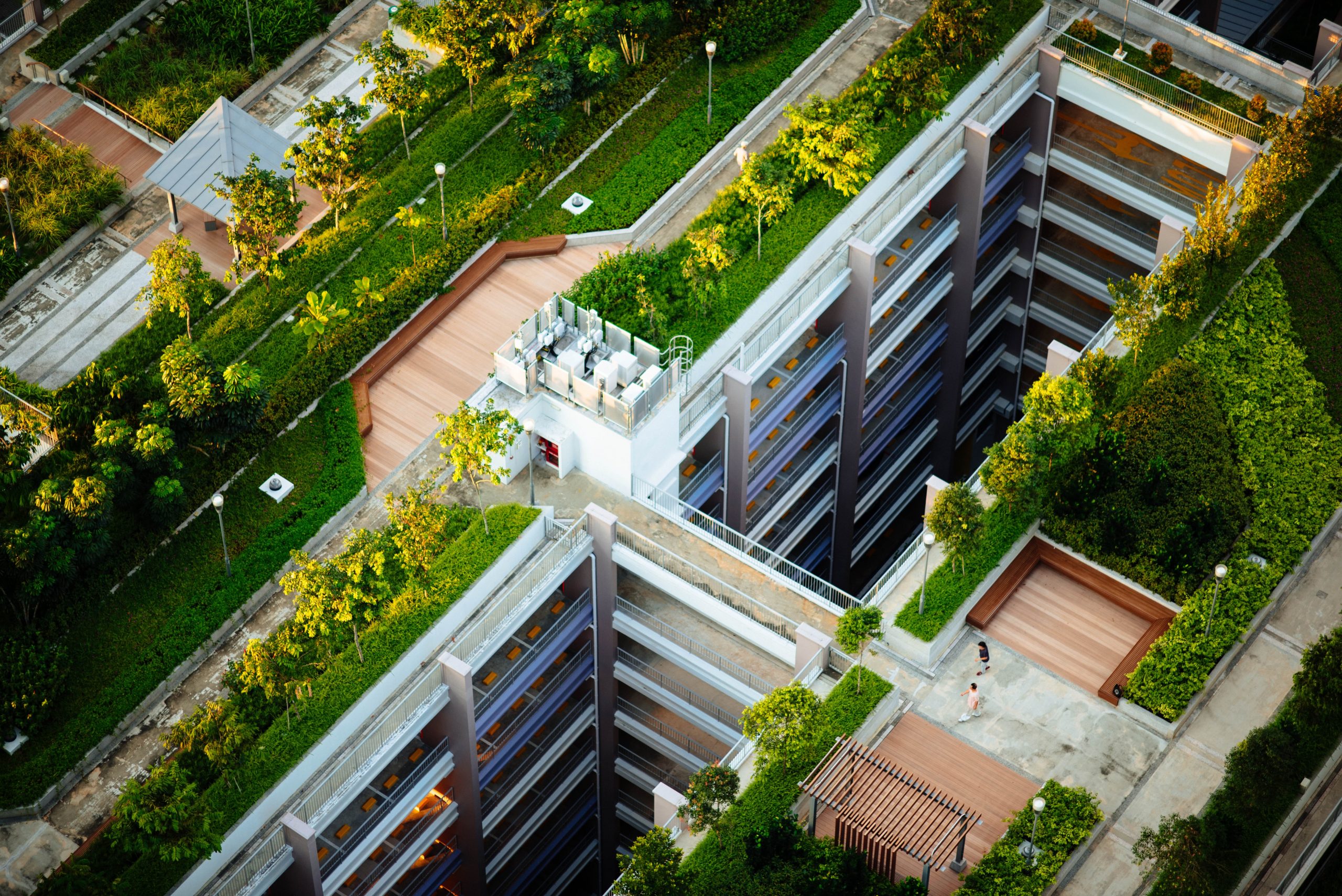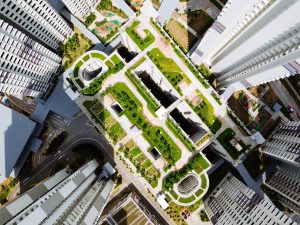Green and Efficient Buildings
Ilse Fick; Julie Anne Salas; Tammy Cunningham; and Christian Brazel
Introduction
Green buildings preserve and maintain precious natural resources. They also improve the quality of life. In their design, construction or operation, these buildings reduce or eliminate negative impacts and can create positive impacts on our climate and natural environment. There are five basic elements (Louisiana Land Conservation Assistance Network, n.d.) of green and efficient buildings and these are: water conservation, indoor air quality, resource conservation, energy efficiency and livable communities.
Transcript
To Access the Video Transcript:
1. Click on “YouTube” on the bottom-right of the video. This will take you directly to the YouTube video.
2. Click on the More Actions icon (represented by three horizontal dots)
3. Click on “Open Transcript”


Topic Overview
Traditionally constructed buildings tend to have a large impact on the environment. These were designed and constructed poorly and use a whole lot of energy which heavily contributes to greenhouse gasses and global warming.
“Globally buildings are responsible for 35% of resources, 40% of energy use, consume 12% of the world’s drinking water and produce almost 40% of global carbon emissions”. (How Do Buildings Affect the Environment?, Multi Comfort (Saint-Gobain.co.uk, n.d.)
The World Green Building Council is working to implement solutions in sustainable buildings. They are striving to take an intelligent approach to energy. Their focus is to safeguard water resources, minimize waste and maximize reuse, and promote health and wellbeing. They are leading the way in keeping our environment green, while creating resilient and flexible structures. They understand that sustainability is also about connecting communities and people, and should consider all stages of a building’s life cycle (World Green Building Council, n.d.)

Innovators and Ideas
In the article “The Hidden Power of Equity in Sustainable Building” (Hirsch, 2017), Jennifer Hirsch PhD reviews the project she was heading for the Living Building Challenge. Dr. Hirsch is a cultural anthropologist and associate professor at Georgia Tech School of City and Regional Planning. Hirsch was leading a team to build a sustainable building on the Georgia Tech campus, in conjunction with the Living Buildings Challenge 2015.
Hirsch discussed the process of creating equitable housing and buildings, which means going beyond sustainability into accessibility and inclusion. The Living Building Challenge is a global competition through The International Living Future Institute (The International Living Future Institute, n.d.).The goal of this building is to bring more women and people of colour into STEM.
Living Building´s Equity Petal Work Group, with Hirsch as co-chair, planned to assist and advise the building project team and the university. In order to achieve positive energy and positive equity at the same time, they sought to engage the work group hiring firm that wants to attract under-represented firms as subcontractors, and create a career for those populations, and for those neighbourhoods, which are some of the poorest in Atlanta. Secondly, a committee worked to attract under-represented populations in design and programming. Lastly, since this building will be used primarily for education, they are advocating that equity be key in the courses that will be taught.
In great news, after completion of the building, Georgia Tech now boasts the Kendeda Foundation Building, which won the Living Buildings Challenge discussed in Hirsch’s article (Kendeda Foundation, 2021).
Organizational Profile
The Anishnawbe Health Foundation is an Indigenous-led registered charity that works to inspire donations and partnerships to support the health and wellness of the Urban Indigenous communities in Toronto. In order to support and preserve the health of these groups, they have gotten together with allies and partners on Ontario’s first mixed used Indigenous Hub, in Toronto’s West Don Lands. This will be a center for wellness, education, housing and childcare, fully informed by Indigenous design principles. (https://supportanishnawbe.ca/, n.d.)
These principles will include indoor forests for both air quality and aesthetics, exterior woodwork inspired by basket weaving to offer shading and cool the building, plus an elevated Indigenous People´s garden with a bioswale and hyperlocal vegetation, which will serve as the anchor of a 2.4 acre site. The Hub will also act as a literal and spiritual gateway to Toronto’s Port Lands revitalization, one of the world’s largest urban renewal projects.
Click on the link to see pictures of the new Anishnawbe Health Centre [new tab].
Conclusion
The importance of the use and design of green buildings in the environment is to lessen operating costs, use energy efficiently, and conserve water. It also decreases environmental impact by reducing surface runoff and the heating effect. Green buildings help to reduce the depletion of natural resources and improve standards throughout time.
Choosing a green building for a home is not just a choice but a long lasting dedication to uphold the virtues of natural and sustainable living. Green buildings are a responsible decision to prevent capital depletion and conserve nature for our future generations.
Sources
Anishnawbe Health Foundation https://supportanishnawbe.ca/
Georgia Tech, Keneda Foundation. (2020, December 10). Georgia Tech – Kendeda Building. Youtube. https://www.youtube.com/watch?v=esm3rhgllEA.
Hirsch, J. (2017, October 25). The hidden power of equity in sustainable buildings – Living Building Chronicle. Living Building Chronicle. Retrieved November 22, 2021, from https://livingbuilding.kendedafund.org/2017/10/25/equity-petal-sustainable-building-georgia-tech/.
Saint Gobain (n.d.). How do buildings affect the environment?https://multicomfort.saint-gobain.co.uk/how-do-buildings-affect-the-environment/.
The International Living Future Institute. (n.d.). Living Building Challenge. The Institute of Living Future Institute. https://living-future.org/lbc/.
Kendeda Foundation. (2021, April 22). The Keneda Building earns the Living Building Challenge Award. Youtube.com. https://www.youtube.com/watch?v=esm3rhgllEA.
Lousiana Land Conservation Assistance Network. (n.d.). Louisiana Land Conservation Assistance Network. https://www.louisianalandcan.org/article/The-five-principles-of-green-building/868.
Wienerberger. (n.d.). Wienerburger. https://www.wienerberger.com/en/sustainability.html.
World Green Building Council. (n.d.). World Green Building Council. https://www.worldgbc.org/what-green-building.
Also called an arboretum, which is the process of planned plantings in the form of living walls and other sustainable plant groupings. It is an eco-friendly method of maintaining healthy air quality in buildings. Plants are chosen that do not need to pollinate in consideration of the health of all. It is a curation for visual pleasure and healing.
An indentation into the ground and includes vegetation, in order to redirect rain waters. In light of extreme flooding in the Toronto core, this will be an effective method of whisking water away from areas that are at risk for flooding.

